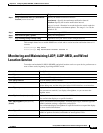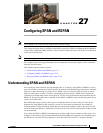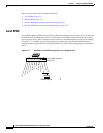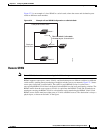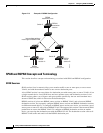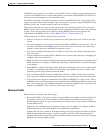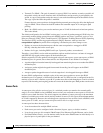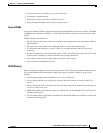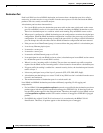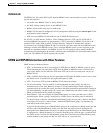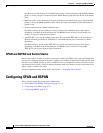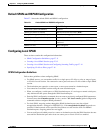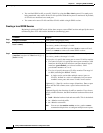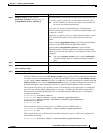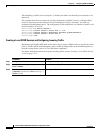
27-7
Catalyst 2960 and 2960-S Switch Software Configuration Guide
OL-8603-09
Chapter 27 Configuring SPAN and RSPAN
Understanding SPAN and RSPAN
• It can be an access port, trunk port, or voice VLAN port.
• It cannot be a destination port.
• Source ports can be in the same or different VLANs.
• You can monitor multiple source ports in a single session.
Source VLANs
VLAN-based SPAN (VSPAN) is the monitoring of the network traffic in one or more VLANs. The SPAN
or RSPAN source interface in VSPAN is a VLAN ID, and traffic is monitored on all the ports for that
VLAN.
VSPAN has these characteristics:
• All active ports in the source VLAN are included as source ports and can be monitored in either or
both directions.
• On a given port, only traffic on the monitored VLAN is sent to the destination port.
• If a destination port belongs to a source VLAN, it is excluded from the source list and is not
monitored.
• If ports are added to or removed from the source VLANs, the traffic on the source VLAN received
by those ports is added to or removed from the sources being monitored.
• You cannot use filter VLANs in the same session with VLAN sources.
• You can monitor only Ethernet VLANs.
VLAN Filtering
When you monitor a trunk port as a source port, by default, all VLANs active on the trunk are monitored.
You can limit SPAN traffic monitoring on trunk source ports to specific VLANs by using VLAN
filtering.
• VLAN filtering applies only to trunk ports or to voice VLAN ports.
• VLAN filtering applies only to port-based sessions and is not allowed in sessions with VLAN
sources.
• When a VLAN filter list is specified, only those VLANs in the list are monitored on trunk ports or
on voice VLAN access ports.
• SPAN traffic coming from other port types is not affected by VLAN filtering; that is, all VLANs are
allowed on other ports.
• VLAN filtering affects only traffic forwarded to the destination SPAN port and does not affect the
switching of normal traffic.



